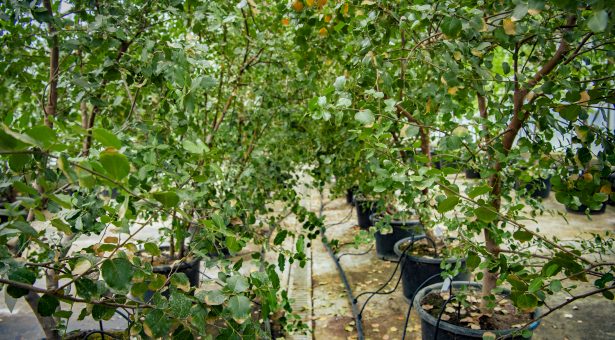Can soapbark tree knowledge improve vaccines? 2023

The therapeutic secrets of the Chilean soapbark tree have been revealed, paving the way for more effective, inexpensive, and sustainably sought vaccinations in the future.
Since decades, the evergreen plant Quillaja saponaria has been highly valued for its production of molecules known as QS saponins, which are utilized as foaming agents in the food and beverage industries.
Saponins derived from the tree’s bark are employed as effective adjuvants in the manufacturing of vaccines, which is a relatively new and significant use. Adjuvants serve a crucial role in certain vaccinations, boosting the vaccine’s efficacy by strengthening the host’s immunological response.
Molecules derived from the soapbark tree are utilized as adjuvants in COVID-19, herpes zoster, and malaria vaccines.
Might insights from the soapbark tree alter the manner in which we produce vaccines?
QS saponins are obtained directly from the tree, and although this is on a much smaller scale than the food and beverage business, vaccine producers are actively seeking to lessen the environmental effect and enhance the sustainability of obtaining these vital resources.

Using a mix of genome mining and bioengineering approaches, researchers at the John Innes Centre have made significant progress in resolving this issue by producing saponin-based vaccination adjuvants in the laboratory without extracting material directly from trees.
Dr. James Reed, lead author of the study and postdoctoral researcher at the John Innes Institute, explains, “Attempts to synthesis these compounds on a large scale using laboratory chemistry have been unsuccessful.” We have now uncovered the core set of genes involved for the production of QS saponins after several detours.
In a study published in Science, the Osbourn group at the John Innes Centre sequenced the genome of Quillaja saponaria for the first time. Subsequently, scientists utilized sophisticated computational gene-mining algorithms to predict which of the 30,000 genes comprising its genome were important for saponin biosynthesis.
This led to the discovery of a biosynthetic pathway consisting of 16 genes that create the enzymes that are the natural building blocks for the creation of saponin. The newly identified genes and enzymes, according to the scientists, serve as a guidebook for future adjuvant bioengineering.
The identification of three more enzymes resulted in a full biosynthetic route for the saponin QS-7, which is a component of a vaccine adjuvant with demonstrated clinical effectiveness but notoriously difficult to purify from soapbark tree.
The pathway to these compounds was recreated in the plant Nicotiana benthamiana utilizing the quick and potent transient combinatorial expression approach.
This tobacco dwarf cousin is well recognized as a suitable host for the bioproduction of medicinal proteins and medicines.
The team is already utilizing this guide to attempt to manufacture more beneficial saponins, such as QS-21, a strong adjuvant and essential component of human immunizations.
The quantities of saponins generated in this study are comparable to those generally derived from the leaves of the soapbark tree, as opposed to its bark.
The team has teamed with Plant Bioscience Ltd (PBL, Norwich, United Kingdom), who is spearheading the commercialization of the study, and is now seeking to collaborate with commercial and academic partners to scale up these numbers.
Professor Anne Osbourn, the study’s director and a group leader at the John Innes Institute, stated, “The COVID-19 pandemic has proven the great need for vaccinations that can save lives. By compiling the genomic sequence of Quillaja saponaria, we now have the handbook that allows us to decipher how the tree produces these strong therapeutic compounds.
This allows our quick transient plant expression technique to produce recognized and novel saponin-based vaccine adjuvants tailored for immunostimulant action and suited for human applications.
Vaccine Adjuvants – a brief timeline
Vaccine adjuvants are immunostimulatory chemicals that are added to some vaccinations to improve the immune response by eliciting high antibody and T-cell responses. They are referred to as “hidden helpers.”
Until recently, the only adjuvants utilized in clinical settings were insoluble aluminium salts or oil-in-water emulsions containing squalene, an organic molecule derived from shark liver.
Saponins have been utilized in veterinary medicine for a century as natural surfactants. Nevertheless, the poor tolerability of these adjuvants renders them unfit for human application. Human use of a vaccination containing a saponin-based adjuvant has been authorized.
With the Novavax COVID 19 vaccine, QS-7 and QS-21 are contained in a complex mixture of saponins manufactured as a Matrix-M adjuvant. The global acceptance of this vaccine is raising interest in saponin-based adjuvants and alternative manufacturing techniques.
Researchers will be able to produce saponin-based adjuvants with a wide spectrum of immune-stimulating effects if they understand the biosynthesis mechanism.
